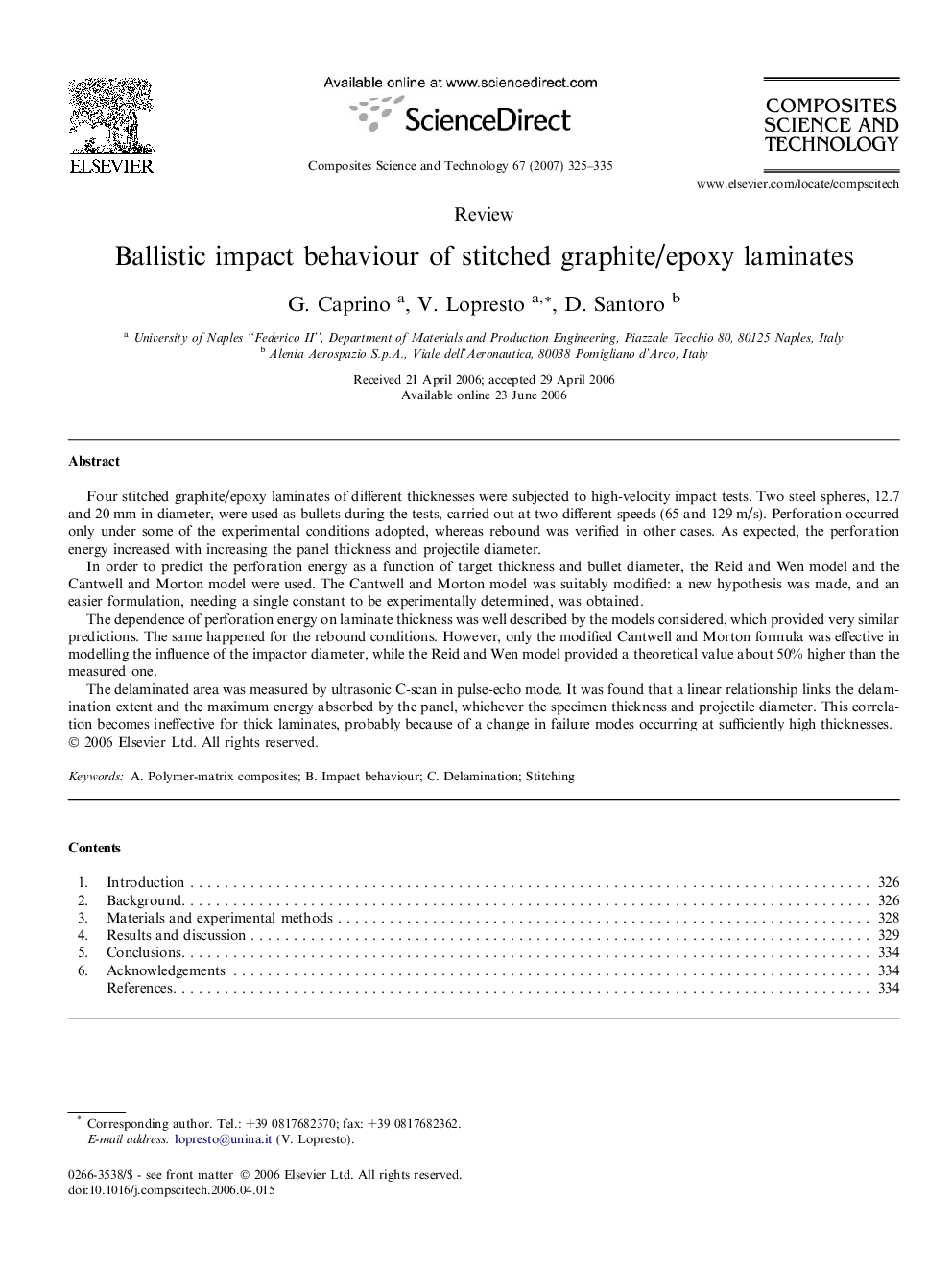| Article ID | Journal | Published Year | Pages | File Type |
|---|---|---|---|---|
| 822963 | Composites Science and Technology | 2007 | 11 Pages |
Four stitched graphite/epoxy laminates of different thicknesses were subjected to high-velocity impact tests. Two steel spheres, 12.7 and 20 mm in diameter, were used as bullets during the tests, carried out at two different speeds (65 and 129 m/s). Perforation occurred only under some of the experimental conditions adopted, whereas rebound was verified in other cases. As expected, the perforation energy increased with increasing the panel thickness and projectile diameter.In order to predict the perforation energy as a function of target thickness and bullet diameter, the Reid and Wen model and the Cantwell and Morton model were used. The Cantwell and Morton model was suitably modified: a new hypothesis was made, and an easier formulation, needing a single constant to be experimentally determined, was obtained.The dependence of perforation energy on laminate thickness was well described by the models considered, which provided very similar predictions. The same happened for the rebound conditions. However, only the modified Cantwell and Morton formula was effective in modelling the influence of the impactor diameter, while the Reid and Wen model provided a theoretical value about 50% higher than the measured one.The delaminated area was measured by ultrasonic C-scan in pulse-echo mode. It was found that a linear relationship links the delamination extent and the maximum energy absorbed by the panel, whichever the specimen thickness and projectile diameter. This correlation becomes ineffective for thick laminates, probably because of a change in failure modes occurring at sufficiently high thicknesses.
